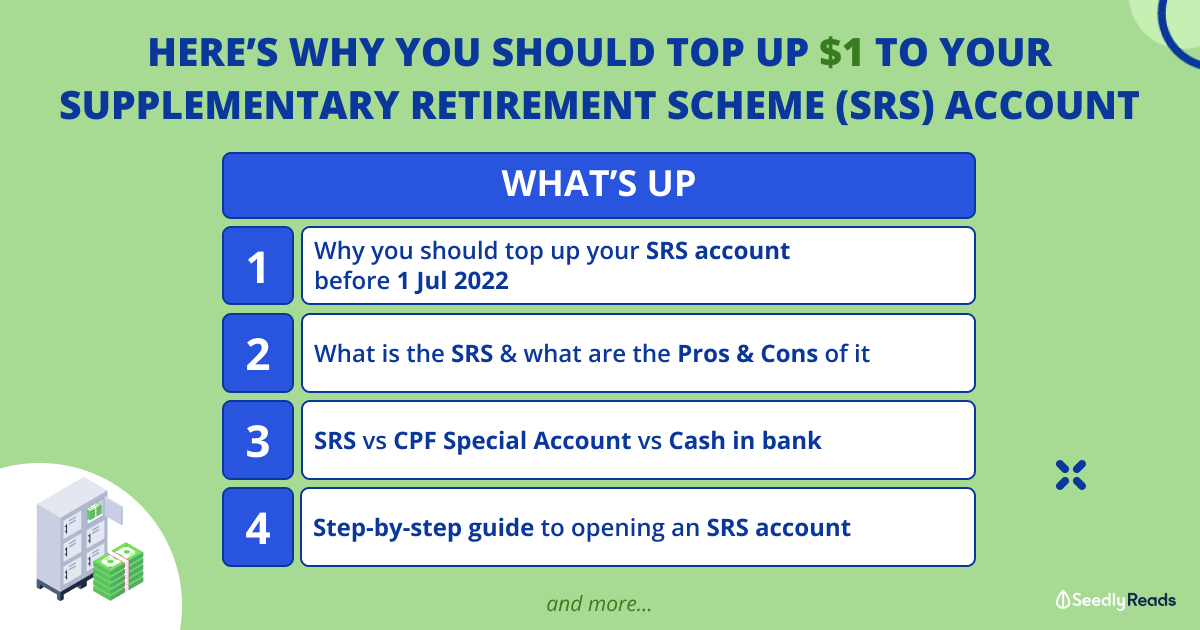Hi Joke Jong,
Yes, combined balance means the total CPF from all accounts, OA, SA, MA & RA (RA if you reached 55 years old).
Currently, the base interest for the accounts are as follow:
OA - 2.5%
SA - 4%
MA - 4%
RA - 4%
The base interest will be credited into it respective accounts annually. Since you did not mention about RA, I'll assume that you are below 55, and we will work with that for now.
The additional 1% interest for the first $60K of your combined balance, with a cap of $20K on OA, will be credited in this sequence:
Meaning in your example, the first $60K will be made up of $10K from your OA, $40K from your SA and $10K from your MA. However, this 1% may not be credited to the respective accounts. The 1% additional interest from OA will be credited to SA, SA to SA and MA to MA. In other words, this is how the additional interest will be credited:
The CPF Board decided to credit the additional interest from OA to SA to help the population grow their SA, which will eventually support their retirement lives. Also, the cap of $20K on OA is likely to encourage the population to actively transfer from their OA to their SA, for the same purpose of ensuring we have enough to support our retirements.
To sum it up, in your example given, your
OA will earn 2.5% interest that is credited to OA,
OA will earn 1% interest that is credited to SA,
SA will earn (4% + 1% = 5%) interest that is credited to SA,
MA will earn (4% + 1% = 5%) interest for the first $10K in the MA that is credited to MA, and
MA will earn 4% interest for the rest of the amount that is credited to MA.
On a side note, with your SA having the same amount as your MA, it shows that it is likely that you do transfer from your OA to SA or top up your SA. Good job with that, and hope that I managed to answer your question.









Hi Joke Jong,
Yes, combined balance means the total CPF from all accounts, OA, SA, MA & RA (RA if you reached 55 years old).
Currently, the base interest for the accounts are as follow:
OA - 2.5%
SA - 4%
MA - 4%
RA - 4%
The base interest will be credited into it respective accounts annually. Since you did not mention about RA, I'll assume that you are below 55, and we will work with that for now.
The additional 1% interest for the first $60K of your combined balance, with a cap of $20K on OA, will be credited in this sequence:
OA (up to $20K)
SA
MA
Meaning in your example, the first $60K will be made up of $10K from your OA, $40K from your SA and $10K from your MA. However, this 1% may not be credited to the respective accounts. The 1% additional interest from OA will be credited to SA, SA to SA and MA to MA. In other words, this is how the additional interest will be credited:
1% x $50K to SA (1% x $10K from OA) + (1% x $40K from SA)
1% x $10K to MA 1% x $10K from MA
The CPF Board decided to credit the additional interest from OA to SA to help the population grow their SA, which will eventually support their retirement lives. Also, the cap of $20K on OA is likely to encourage the population to actively transfer from their OA to their SA, for the same purpose of ensuring we have enough to support our retirements.
To sum it up, in your example given, your
OA will earn 2.5% interest that is credited to OA,
OA will earn 1% interest that is credited to SA,
SA will earn (4% + 1% = 5%) interest that is credited to SA,
MA will earn (4% + 1% = 5%) interest for the first $10K in the MA that is credited to MA, and
MA will earn 4% interest for the rest of the amount that is credited to MA.
On a side note, with your SA having the same amount as your MA, it shows that it is likely that you do transfer from your OA to SA or top up your SA. Good job with that, and hope that I managed to answer your question.